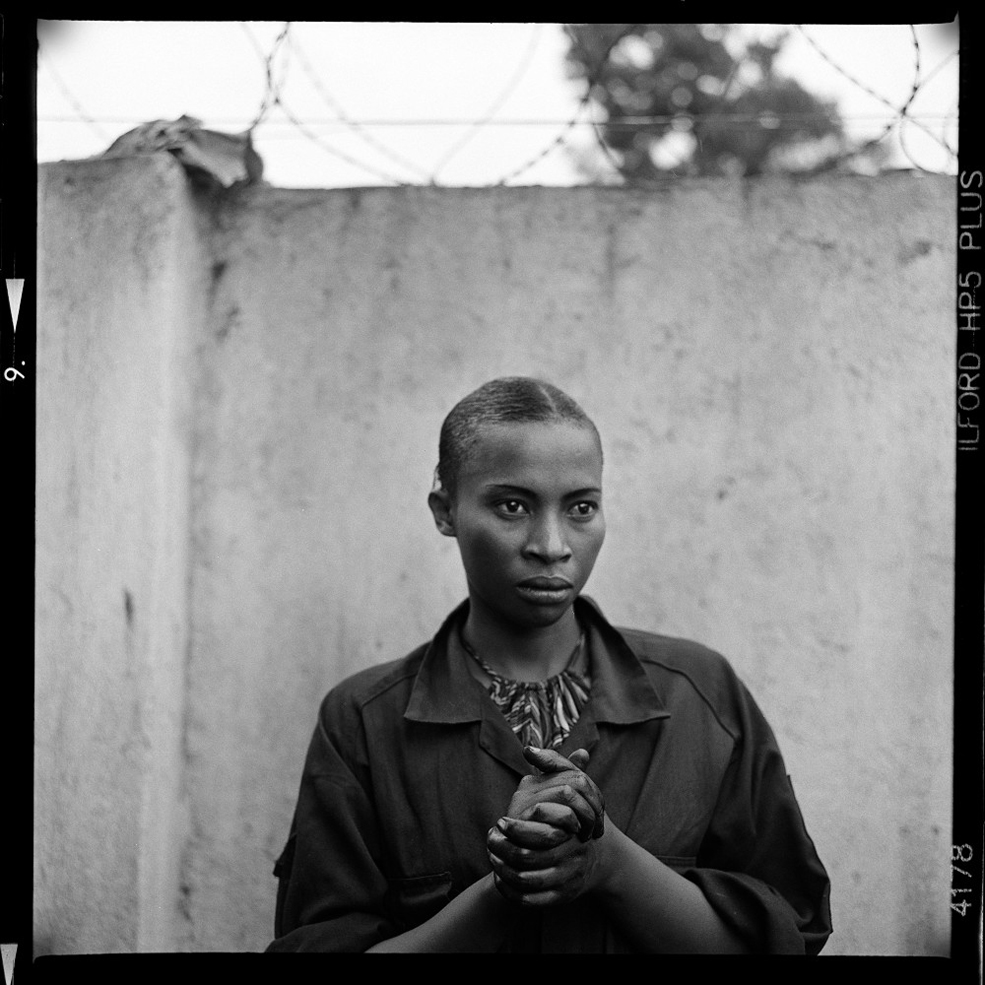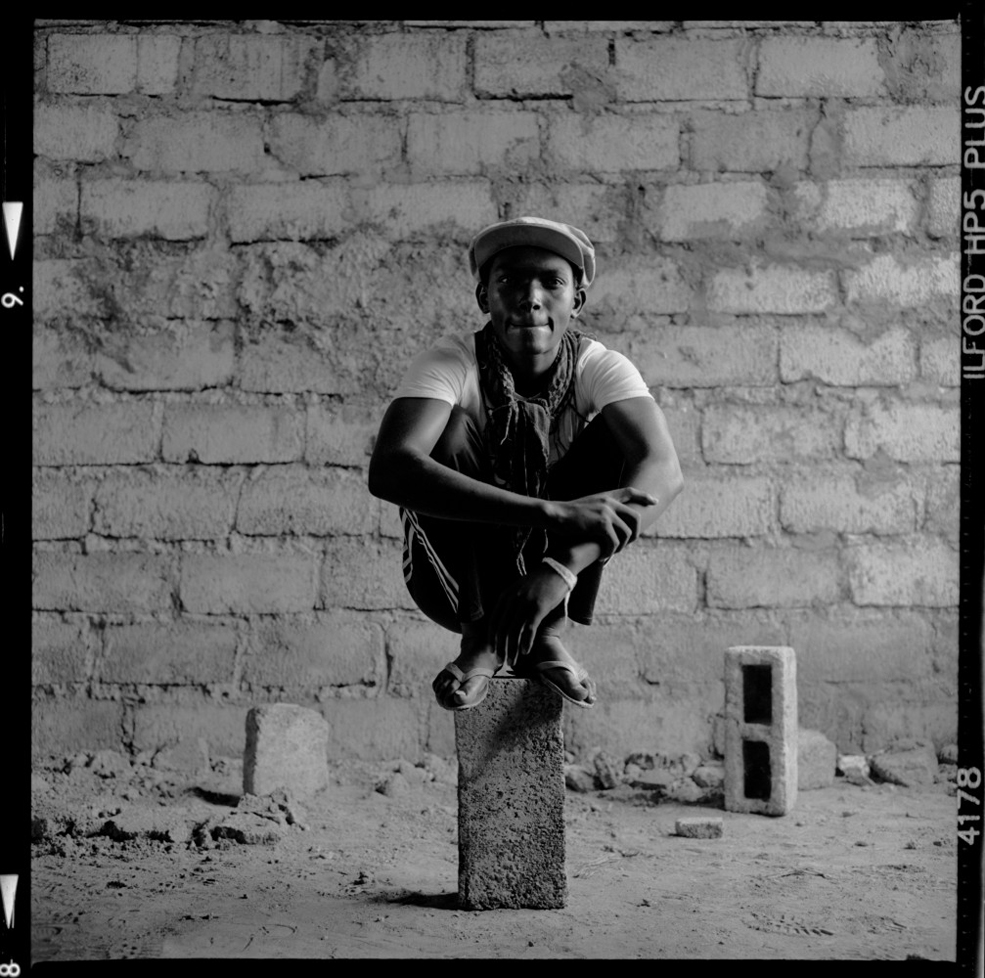These haunting portraits of former child soldiers reveal the spirit of redemption
An award-winning photographer captures the tragedy and promise of some of the Congo's youngest war survivors


Larry C. Price has spent decades perfecting his documentary-style photography. He has traveled all over the world capturing a variety of decisive, often volatile moments, from the 1980 coup in Liberia — for which he won a Pulitzer — to child labor camps in the Philippines (pictured below), which he completed more recently.

But one style had always eluded him: portraiture. And, yet, when the Center for Investigative Reporting — in partnership with the online publication Medium — tapped him to photograph former child soldiers in the Congo, Price knew immediately what he had to do.
"I just had an epiphany," Price said in a phone interview. "Because these are former child soldiers you have to figure out a different visual approach to tell someone's story, to tell what they used to do. It was obvious it had to be a portrait treatment, which was a bit of a stretch for me."
The Week
Escape your echo chamber. Get the facts behind the news, plus analysis from multiple perspectives.

Sign up for The Week's Free Newsletters
From our morning news briefing to a weekly Good News Newsletter, get the best of The Week delivered directly to your inbox.
From our morning news briefing to a weekly Good News Newsletter, get the best of The Week delivered directly to your inbox.
Price traveled with the writer Richard C. Paddock to eastern Congo where they ping-ponged between two vocational training centers that offer programs to help former child soldiers learn a trade and enter the civilian world. The journalists chose about 12 young men and women to share their experiences of trying to move on from the unimaginable violence that had marred their childhoods.
To tell these visual stories, Price shot two series — his go-to, in-color documentary style using a digital camera; and formal black and white portraits using medium-format film. The color photos (which you can see here) are active, urgent, and present, often showing these teenagers and young adults hard at work. But it is the black and white portraits that reveal the thoughtful heart of the project.

"The challenge was to make a very simple image that had some power behind it," Price said. The black and white film added depth to his visual approach, giving the film an antiquated look. "I wanted to use the film as a metaphor to their past life."
But a good photograph can't rely on film and technique alone. Price needed to know his subjects — a unique challenge for such a short and emotional project. Price made a point of sitting in on Paddock's interviews, which were often emotionally and physically draining for the person recounting the excruciating details of his or her life. "Some of them had never talked about this stuff even among themselves," Price said. "So, there's an intimacy that's established quickly."
A free daily email with the biggest news stories of the day – and the best features from TheWeek.com
And such a rapport paid off. By the time the subjects got to Price for the formal portraits, he had a pretty good idea as to what they were about.
"It underscores the necessity of really understanding the subject. That's what a portrait photo does," he said. "It filters out through nuance someone's personality and conveys that visually."
Price's 12 subjects and their stories — both tragic and compelling — are not something he will soon forget. "It was so sad," Price said. "There are 12 people here but how many thousands or hundreds of thousands have been through this living hell, caught up in this conflict for the past 20 years? Some of these individuals know nothing else."
**

Gode Musore is now 18-years-old and training to be a hairdresser, a vocation he was surprised to find he enjoyed. It's a far cry from how he was forced to spend his days just a few years ago. Gode was 10 when soldiers took him from his home and sent him into combat with the rebels. Armed with a lightweight submachine gun, the third-grader was thrown into battles where he did what was required of him.
"I killed many people," he told Richard Paddock in an interview. "I have blood in my mind and on my hands. I feel bad, but sometimes I think it's not my fault because I was sent by my commander."
During the short time Price had with Gode, the teen proved himself to be incredibly likable, cooperative, and patient. "Ironically, I didn't realize it at the time, but he had probably killed the most people as a kid," Price said. "He was clearly tortured by it."
Price planned to photograph Gode in a bare courtyard outside the training facility Let Africa Live in Bukavu. Gode was quiet during the short session, despite Price's best efforts to draw him out. At one point, Gode turned his head to watch a bird fly by and Price took the shot. He didn't need to take many photographs after that, just five or six — he knew he had the shot.
**

Mugoli Shukuru is 19-years-old and training to be a mechanic at Let Africa Live. She was 14-years-old when armed men came for her in the middle of the night. When her father protested, the soldiers shot him dead and delivered Mugoli to the jungle where she became the commander's wife. Two years later, she managed to escape, fleeing the camp and the brutality of the commander with her young daughter, just days before giving birth to her second child.
Price said it's Mugoli's photo that really solidified the project for him. She was really nervous for the portrait. She had had a really tough time in the interview and she was constantly wringing her motor-oil-caked hands. Price asked her to hold still for a moment so he could take the photograph in the fading light. "She just froze and a kind of blank expression came on her face and it was perfect. That one was the moment. I liked that photo a lot."
**

James Black is 20-years-old and training to be a mechanic at the Group for Education and Training of the Victims of Nyiragongo in Goma. James was 15 when he was taken captive by one of the most notorious rebel groups in eastern Congo. As a child soldier, the boy was forced by the commander to shoot a captive or be killed himself. He says it was the only time he knowingly killed someone.
James was actually the last person interviewed and photographed for the project. "He was a really smart kid and a snappy dresser," Price said. Price found an abandoned classroom next to the compound they were working in. He thought the window light coming in against the cinderblock wall would be a nice shot. Price had to change rolls of film and as he turned his back, James began playing around, balancing on these cinderblocks. Price knew that was the shot. He asked him to do it again, and he took four frames and that was that.
**
Of his experience in the Congo, Price said it has given him a lot to consider — not just the subject matter, but also the potential for portraiture. "I came away thinking that I might cultivate it and incorporate that into my work and different avenues," he said. "I think it's really powerful."
The project also re-ignited his love of using and developing film. He noted how the analog art form is once again being embraced by photographers. "Digital is 99 percent of what I do," Price said. "But, as a visual communicator, the more experimentation, the better." Besides, "The finished product just looks so damn cool."
**
The project — Redemption Songs: How does a child survive war and enter civilian war? — was produced by the Center for Investigative Reporting and is published in its entirety at Medium.
To see more work by Larry C. Price, check out his website.
Lauren Hansen produces The Week’s podcasts and videos and edits the photo blog, Captured. She also manages the production of the magazine's iPad app. A graduate of Kenyon College and Northwestern University, she previously worked at the BBC and Frontline. She knows a thing or two about pretty pictures and cute puppies, both of which she tweets about @mylaurenhansen.
-
 How drones have detected a deadly threat to Arctic whales
How drones have detected a deadly threat to Arctic whalesUnder the radar Monitoring the sea in the air
-
 A running list of the US government figures Donald Trump has pardoned
A running list of the US government figures Donald Trump has pardonedin depth Clearing the slate for his favorite elected officials
-
 Ski town strikers fight rising cost of living
Ski town strikers fight rising cost of livingThe Explainer Telluride is the latest ski resort experiencing an instructor strike
